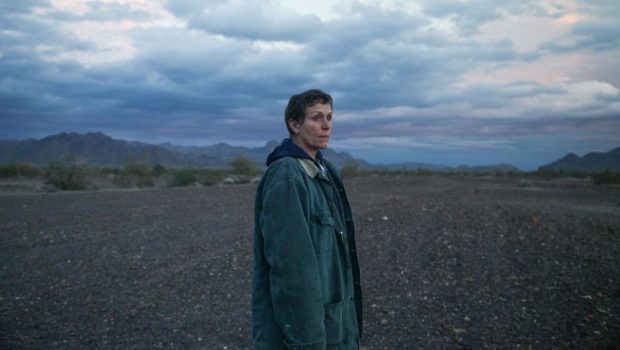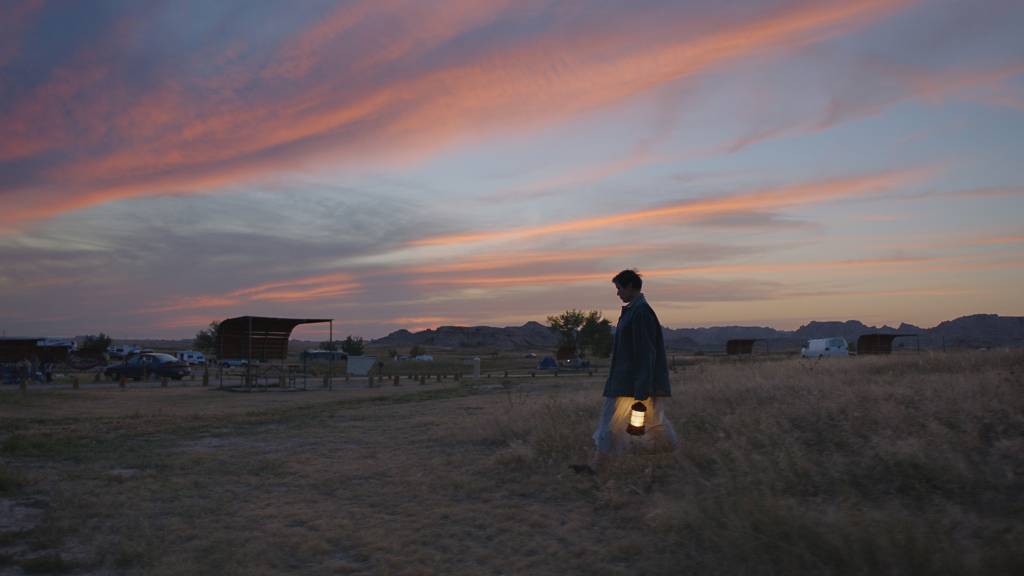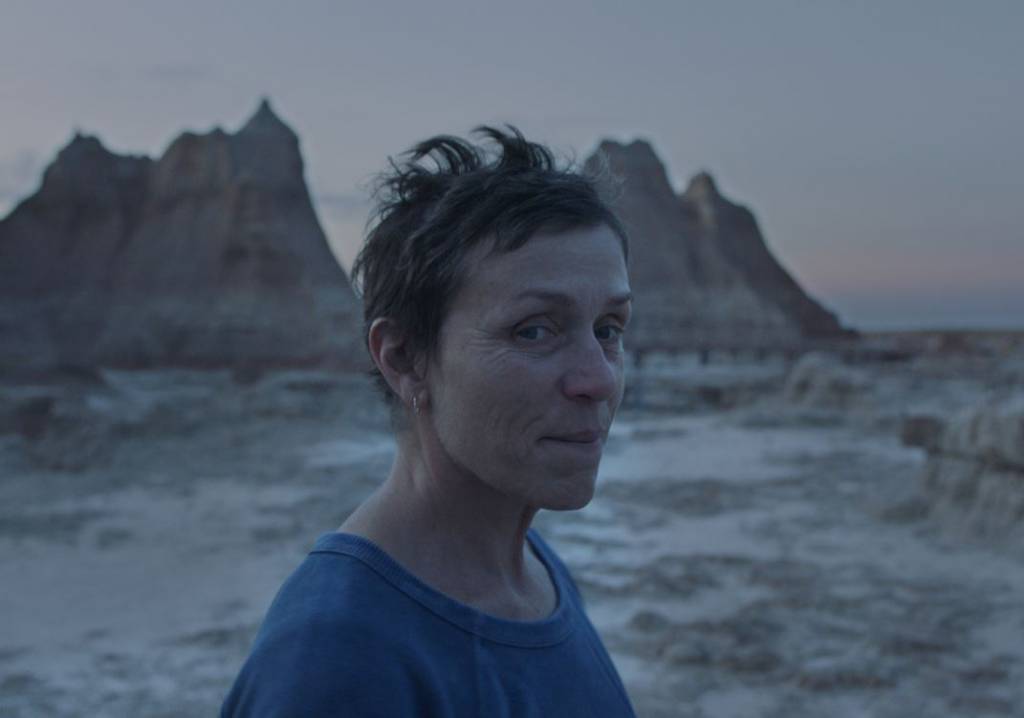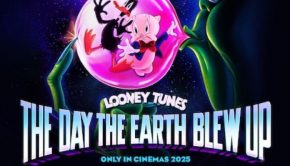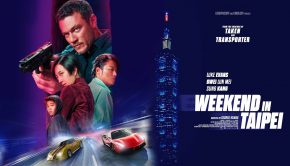Nomadland – Film Review
Reviewed by Damien Straker on the 4th of March 2021
Disney presents a film by Chloé Zhao
Produced by Frances McDormand, Peter Spears, Mollye Asher, Dan Janvey, and Chloé Zhao
Screenplay by Chloé Zhao based on ‘Nomadland: Surviving America in the Twenty-First Century’ by Jessica Bruder
Starring Frances McDormand, David Strathairn, Linda May, Bob Wells, and Swankie
Music by Ludovico Einaudi
Cinematography Joshua James Richards
Edited by Chloé Zhao
Rating: M
Running Time: 108 minutes
Release Date: the 4th of March 2021
Nomadland is one of the most understated and quietly painful films I have seen. At a time when American movies have become increasingly loud and bombastic, Chinese director Chloé Zhao’s filmic style is etched in the ‘less is so much more’ approach. The thirty-eight-year-old director’s previous film, The Rider (2018), was an ultra-realistic western about a man who surrendered his dream of being a rodeo star. Instead of using professional actors, it was filmed using real people from South Dakota. The casting amplified the verisimilitude of the film’s narrative. Actress Frances McDormand saw the film and argued Zhao should adapt the non-fiction book ‘Nomadland: Surviving America in the Twenty-First Century’ by Jessica Bruder. It was a masterful decision. The realism and subtlety of The Rider continues to permeate throughout Nomadland. The film’s audio-visual choices do not detract from McDormand’s character. Rather, the neorealism infuses her journey with the achingly loneliness of a grieving heart and the pleasures of seeing the world’s scenic beauty. The stylisations, coupled with McDormand career-best performance, result in a remarkably assured piece of filmmaking.
The film adopts a minimalist-style plot that dramatises an economic downturn as a metaphor for personal grief. Fern (McDormand) is a nomad, a person who appears homeless as they travel throughout the desert in their caravan. The year is 2011, and we are told a town in Nevada called Empire has been erased due to the shutdown of a factory following the global financial crisis. Fern and her husband used to work in the factory, but he has since passed away. Fern now undertakes brief stints in an Amazon factory to stay afloat. The rest of her time is spent on the road behind the wheel of her customised van as she travels to Arizona and South Dakota. Sometimes she stops to make a little money by returning to Amazon or working in a restaurant. In one sequence, she parks her van and sleeps inside to shield herself from the blistering cold of winter. She also meets several fascinating people in caravan parks who share their stories of hardship. One of them is Swankie (played by herself) who is unwell, and another is Bob Wells (himself) who organises first-time nomads. The most interesting is David (The Bourne Ultimatum’s David Strathairn). His gentle attachment to Fern makes her question her loyalties.
Nomadland captures some of the most incredible scenic imagery throughout modern cinema. Zhao and her cinematographer, Joshua James Richards, mask the cinematic artifice by shooting the American West with a highly naturalistic lens that enriches the narrative. Her camera frames startlingly beautiful images, including several glowing purple sunsets and the sparse beauty of the American landscapes. Whether driving across open roads or standing alone in a field, the terrain is majestic, awe-inspiring, and vivid. Rather than lingering on its aesthetic value alone, Zhao uses the wide-open spaces to enrich her storytelling. A repeated visual choice she makes is framing Fern from long shots, ensuring she is dwarfed by the depth of the landscape and specific structures. A memorable example is when her tiny figure is pitched against the enormity of a dinosaur statue. The moment typifies the perpetual visual pattern that evokes Fern’s isolation in the world. In another scene, the camera crabs sideways in a single, unbroken take. It traces Fern as she walks away and gently dismisses an invitation from others in the camp. The tracking shot reflects her loyalty to her husband’s memory despite the presence of new people. The depth of the images in these sequences also underlines a pivotal psychological dilemma. As reflected in the open spaces, Fern is torn between the impossibility of relinquishing her husband’s memory and embracing new connections through the shared beauty of the American landscapes.
Spatiality in Nomadland is also expressive of comfort and personal dislocation. Throughout her journey, Fern’s van is a comforting space that eases her isolation. A person she meets has a tattoo on her arm that says ‘home, is it just a word? Or is it something that you carry within you?’ The line infers that the van is a reoccurring visual motif that reflects how Fern carries her husband’s memories with her and prolongs her unbreakable loyalty to him. A treasured item inside the van is a collection of family plates, which further underlines her devotion. The enclosed spatiality reflects the sense of comfort because the frame narrows as the camera films her living, sleeping, and eating inside. In one scene, Fern leaves the warmth of a large house where she is staying as a guest. Instead, she chooses to sleep inside her van. The change in the space from the openness of the house to the van’s narrow interior reflects the familiarity and comfort memories bring grieving people. For some, remembering the past is warmer than creating new connections and being hurt again. In this way, Nomadland deconstructs Hollywood’s current infatuation with nostalgia. In addition to being unable to relinquish her memories of her husband, she draws little comfort from her own family, including her sister from whom Fern borrows money. A political discussion regarding real estate and remorse about Fern’s absence years ago pries open old wounds. The scene reflects the difficulty of reconnecting with family members after long periods of personal dislocation.
Zhao’s filmic style further comments on the superfluousness of consumerism and materialism. Some have criticised Zhao for being soft on Amazon, a corporation that treats its workers heinously through long hours and difficult labour. The emphasis of Zhao’s story is not to probe the exploitation of Amazon workers because that is not the perspective of Fern. Instead, Zhao condenses the character’s viewpoint into deliberately contrasting images. She juxtaposes the naturalism of the American landscapes with the inside of the factory. The comparison shows the power and complexity of modern industrialisation over naturalism. The briskness of the factory scenes also underlines capitalism’s fleetingness for Fern. Working at Amazon or a fast-food place where she cleans toilets is merely a means to continue living in solitude. Zhao reflects Fern’s indifference through the quick cuts from these scenes. Material goods are also briskly traded for other items on the journey. The only meaningful goods to Fern are her plates and her husband’s clothes, which she keeps in storage. Compare how Zhao cuts away from the Amazon factory to how she frames faces. Many of the people Fern meets are filmed in unbroken close-up shots. The extended shot duration is infinitely longer than the Amazon scenes. The contrast in framing is deliberate, suggesting people are more valuable than the capitalist system paying for Fern’s journey. Capitalism is therefore characterised as secondary to naturalism and the invaluable human experience.
The film’s most extraordinary feature is Frances McDormand’s career-best performance. The actress, who is married to director Joel Coen, has been renowned for playing both powerful and quirky characters in films such as Fargo (1996) and Three Billboards Outside Ebbing, Missouri (2017). Her performance is completely removed from any visible showmanship. Instead, her reserved, subtle work gently exudes the quiet angst that belies a brave smile or the polite acknowledgement of strangers. Fern’s resistance to long-standing connections is born from her unwavering loyalty to her husband’s memory. Yet she continues meeting people who grieve but find solace in nature. In powerful judicious moments, aided by a touching, gentle music score, McDormand’s eyes reveal the aching loss that haunts her conflicted character. The simmer of anxiety could be mistaken for a lack of immediate conflict, but it is a gentle expression of oppositions. The greatest example of clashing views is through David Strathairn’s character. The actor strikes a precise balance between being present but not overstating his intentions. At most, David tells Fern he likes her and would like her to stay with himself and his family. He too has been absent from his family. He is a man who possesses a fluid understanding of what a home is because he is on the road but can return to a nice middle-class family at will. The other fine performances are from the locals Zhao has cast. Their stories surrounding sickness, loss, and coping mechanisms relating to nature are incredibly touching. Their inclusion dilutes the cinematic artifice and reinforces the rural setting’s verisimilitude.
What makes Nomadland terribly affecting is that despite its entirely understated form, its qualities effectively unify in perfect synergy. The stunning imagery of the American West is glorious to behold and is symbolic of the loneliness of the world and how a damaged heart reduces a person to a single drop on the earth’s surface. It is also the film’s intense personal dilemma that creates a quietly complex situation. It asks whether it is better to be loyal to the memories of people we once knew or accept the company of strangers who share similar experiences of grief. In Zhao’s eyes, people are worth infinitely more than the faceless corporations and the dispensable materialistic goods they produce. Her ideological and political viewpoint is that despite their size, these institutions are meaningless compared to the unification and comfort of small American communities. Zhao and McDormand make a rich case that people like Fern who grieve are not to be marginalised because they no longer serve powerful corporations. Rather, they are forgotten working class people who doggedly pursue the end of their lives and view the world as a mirror of the past, reflecting how glorious everything once was.
Summary: Nomadland is a remarkably assured piece of filmmaking. It is one of the most understated and quietly painful films I have seen.

